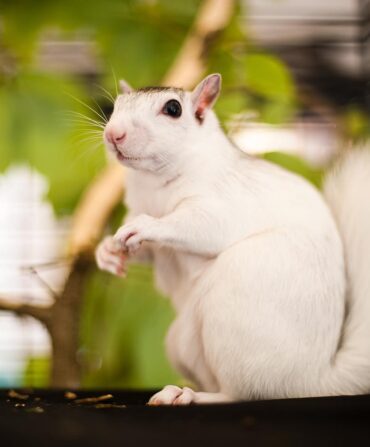Where do they go? It’s what every Southern gardener wonders at some point after the ruby-throated hummingbirds disappear. These “glittering garments of the rainbow,” as John James Audubon called them, delight us all summer not only with their beauty, but also with their antics. They’re better than daytime drama. They are the bold and the beautiful, the young and the restless. Despite their appearance on genteel needlepoint pillows, they are not genteel. Despite eating sugar water, they are not sweet. At home in Oxford, Mississippi, I love to watch the dominant male who perches in our Bradford pear, hidden among the leaves, waiting for another hummer to even think about sipping his nectar. Should one try, he zings after it and bullies it off, then loops back to his perch and resettles himself with a cartoonish fluffing of his throat gorget. But round about time the maples start to redden and Ole Miss has started conference play, I realize we haven’t seen him in a day or two. And the feeder activity is definitely lighter. Then, a week later, the hummers have disappeared entirely. Long after the last sugar water has been dumped and the feeders washed and stored, the question remains. Where do they go?

Photo: Wynn Myers
A rufous-tailed hummingbird.
As it turns out, they go exactly where many of us would go: due south for the winter. In late summer, the rubythroats start drifting down through North America, and when they reach the Gulf states, they linger. They gorge until they’ve doubled their weight, to roughly a nickel’s worth. Then they lift off one evening and fly through the night without stopping, a trip of five hundred miles, to winter in Mexico and Central America. Their migratory route appears to be hardwired into the genetic codes packed inside their BB-size brains.
It’s hard to believe, and for a long time people simply didn’t—hence the myth that hummers hitch rides on the backs of geese. After all, there was little evidence to prove migration. Although hummingbirds were first written about in 1558 by a French colonist in Brazil, our knowledge of them is full of holes. Hummers have left few fossils, so their evolution is largely conjectural. Taxonomists find them difficult to classify. Because they’re so fast—they have the most rapid wing beat of all birds and can fly sixty miles per hour during courtship dives—they’re hard to photograph. Because they’re so lightweight—you could mail eight of them for the price of a first-class stamp—they can’t wear tracking devices. Their wintering-ground behavior is unknown to us. The ornithologists of Central America are, quite naturally, more interested in their unique Central American birds than in half-year, fly-by-night migrants.
But Bill Hilton Jr. is very interested. He’s the executive director of Hilton Pond Center for Piedmont Natural History—“the world’s longest name for the smallest nature center,” he says, of basically his backyard pond and surrounding eleven acres in York, South Carolina. Hilton—trim, bespectacled, punctual, a former high school and college science teacher—is one of about two hundred licensed hummingbird banders in the United States. He’s also one of the “50 Best Brains in Science,” according to Discover magazine. He began banding rubythroats at Hilton Pond thirty-one years ago, and he’s banded more than 5,000 there since. Like the rest of us, he wondered where they disappear to. Unlike the rest of us, he made it his life’s mission to find out.

Photo: Wynn Myers
Beak Condition
Bill Hilton Jr. examines a rubythroat through a jeweler’s loupe.
Thus began Operation RubyThroat. Prior to Hilton’s first trip in 2004, to Costa Rica, just 46 hummers had been banded in the Neotropics. Ten years and twenty-five trips later, Operation RubyThroat has banded 1,248 hummers. Every bird banded adds to the sum total of knowledge, which Hilton says “might make the difference in helping hummingbirds survive the onslaught of human development on both ends of their migratory path.” Hilton definitively established South–North spring migration when a hummer he’d banded in Costa Rica turned up in Baxley, Georgia. Now he’s determined to prove North–South fall migration. To do so, he needs to catch in the tropics a hummingbird previously banded in North America. A needle in a haystack? I think of the needle bill of the rubythroat and its huge territory, and know that Hilton’s chances are much slimmer.
But I like long shots. I scrolled through the upcoming banding trips on Hilton’s website and signed away my spring break to follow the hummingbirds to Belize.
The first thing that became clear is that rubythroats are superior travelers—they carry no baggage beyond the blister-like fat deposit on their chests that they draw down as they make the eighteen-to-twenty-four-hour flight, and they fly direct (no layover in Atlanta—so it is possible, after all!). We—the other thirteen “citizen scientists” and I—arrived via less elegant means, congregating at the Belize City airport. We were not yet “The Un-Belizeables”—every group earns a nickname—but a rather tetchy ragtag assortment, a handful of college students and their biology professor, some retirees, not so many in the middle.
We set off for the interior in the big van provided by our lodge, Bird’s Eye View, and soon learned another lesson about rubythroats: They’re wise to migrate to Belize. It’s delightful for human migrants as well—no jet lag, English the national language, and both Belize and U.S. dollars accepted everywhere. The country is the size of Massachusetts, with a population that fits in a single phone book. Located beneath Mexico, Belize leans its right shoulder into the Caribbean, bathing in warm-watered, flip-flopped, “yah mon” breezes. Its other shoulder is shaded by jungle, growing denser as one approaches Guatemala. It’s amazing how quickly sand-in-the-high-thread-count-sheets becomes mosquito-netted-bunks in the Central American rain forest. Somewhere between the two is the wetlands, where a huge lagoon surrounds an inland island, Crooked Tree Village, now a wildlife sanctuary and home to our lodge. Most of Crooked Tree’s thousand residents make their income from the cashews, which grow on thirty-foot-high trees that bloom in March with clusters of small pink nectar-dense flowers. The hummers find them delicious, so that’s where we were headed.
Our first day of banding, we were awakened before dawn and vanned to the site, where we walked among the trees and established net lanes, sometimes with the aid of a machete.Then we broke off into pairs to hammer stakes into the ground and plant tall metal poles with nets stretched between them. They looked like badminton nets, if badminton nets stretched to the ground, and if the object of the game wasn’t to hit over the net but into it, and if the birdies were, well, birdies. Then we withdrew beneath the canopy to begin our stakeouts.
Photo: Wynn Myers
GG0315_Adventures_03
Mayan ruins.
1 of 5
Photo: Wynn Myers
Hilton in the process of banding a rubythroat.
2 of 5
Photo: Wynn Myers
Net Results
Caught birds await identification and tagging.
3 of 5
Photo: Wynn Myers
A rufous-tailed hummingbird.
4 of 5
Photo: Wynn Myers
GG0315_Adventures_02
A birding boat tour.
5 of 5
It was not an unpleasant way to spend a morning, sitting on a field stool in the shade under the sweet-smelling cashews. Binoculars in hand, we listened to overlapping bird calls, so many they strafed the atmosphere in layers, the cussing of the catbird, the squeaky bicycle wheel of the black-and-white warbler, the tropical mockingbird mimicking the warbler. That it was pleasant might surprise a few. That it was dramatic might surprise more. The bird-loud symphony would be penetrated by a shout—“Bird! Bird, net six!”—galvanizing the troops. One net watcher would extract the bird, and the other would log the time, the net number, and the region of the net in which the bird had landed. Then the bird would be popped into a mesh bag to be carried to the banding table. “A lingerie bag?” I’d asked the first day. “If it’s good enough for Victoria’s secrets, it’s good enough for Mother Nature’s,” Hilton said. At the table, he presided like a god, or a surgeon, or a surgeon working on a tiny god, which, in a way, he was. The table was laid out with instruments, and on either side of Hilton an Un-Belizeable logged the statistics. With a dial caliper, Hilton measured the first rubythroat’s bill length (18.5 millimeters) and wing chord (44.2 millimeters). He slid the hummer into a paper tube to immobilize it and then weighed it (3.37 grams). He measured the tail and level of feather molt and zeroed in on the bird’s age. He blew onto its chest—this ruffling of feathers allowed him to evaluate the fat deposit. Then he guessed the bird to be a female based on its white throat and size—females are usually a little bigger than males—but he spread the wing to be sure. Immature males don’t have the red gorget until their first winter, so a bander sexes the birds by looking at the tip of the number-six primary feather—rounded in females, pointed in males. Bingo. His scribe wrote “female” in the log.
Meanwhile, Hilton cut off a minuscule piece of aluminum, photoengraved with a serial number, from his banding sheet. Looking through a jeweler’s loupe, he squeezed his pliers to clamp the tiny metal strip over the hummer’s leg. The band is so small it fits over Lincoln’s eye on a penny, the weight comparable to a wristwatch on a human. He slid the banded bird from the tube and gave its chest a dab with purple marker so that if we saw it in the net again we wouldn’t re-bag it. Then he allowed
one of us the honor of releasing the bird. “Fly to Hilton Pond,” Hilton would shout after it, only half kidding. If one obeys, and he manages to recapture it, he’d extend the claims we can make about hummer migration. But anyone could help extend these claims; anyone could find the bird and report its number to the federal Bird Banding Laboratory in Maryland, though spotting the band isn’t easy, especially because hummers fly with their legs tucked. Still, it could happen. That guy in Baxley, Georgia, for example—an employee of a car dealership. He’d found a clump of cobwebs on the floor, inside of which was a dying hummingbird (presumably, the hummer flew into the truck bay, got trapped, and darted around the rafters until its wings were glued with webs). While trying to free the bird, the manager noticed its tiny bracelet. Puzzled, he called his local game warden, who made a call to someone, who made another call, and eventually the band was traced back to Hilton, that very small band on that very small bird becoming the first-ever proof of migration.
We never did recapture a rubythroat previously banded in North America, though we banded many, and caught plenty of other astonishing birds, too—twenty-one species, to be exact. Whenever Hilton drew a new one from the lingerie bag, he’d hold it aloft and wait for us to flip madly through our field guides. Everyone wanted to be the first to identify, to sing out “Red-legged honeycreeper!” Native nonmigrants were admired and then paroled—a little like catch-and-release fishing, if almost

Photo: Wynn Myers
Birds of a Feather
A pair of red-legged honeycreepers prior to release in the jungle.
every fish you pulled out of the water was a different spectacularly colored species than the last. But any species that migrated received jewelry before parole. A few times, when Hilton extended a bird’s leg, it already wore some. If the band was shiny, we knew we’d caught the bird that week. If the anklet was tarnished, the bird was a precious recapture. We netted a yellow-breasted chat Hilton had banded in 2011 and recaptured every year since at this same four-acre cashew woodlot, “remarkable evidence of site fidelity,” he said, “and irrefutable evidence of the urgent need to protect even small pieces of habitat within the wintering range of these Neotropical species.” He looked off, and it wasn’t hard to imagine him worrying about the FOR SALE sign stabbed at the edge of the lot. In 2011, the aloe vera fields of Guanacaste, Costa Rica, were plowed down, and the seven years of Operation RubyThroat’s site fidelity study there macheted just as thoroughly.
But like any good scientist, Hilton focused on the here and now, the bird in the hand, in this case a hatch-year male rubythroat just starting to earn its red sequins. Hilton selected me to release it. “Fly to Hilton Pond,” he called out, then turned, ready for the next bag. The bird was still sitting in my palm. “And visit Oxford, Mississippi, on the way,” I whispered. Still it lingered—one Mississippi, two Mississippi—and then, faster than should be possible, zinged away, flying north.












